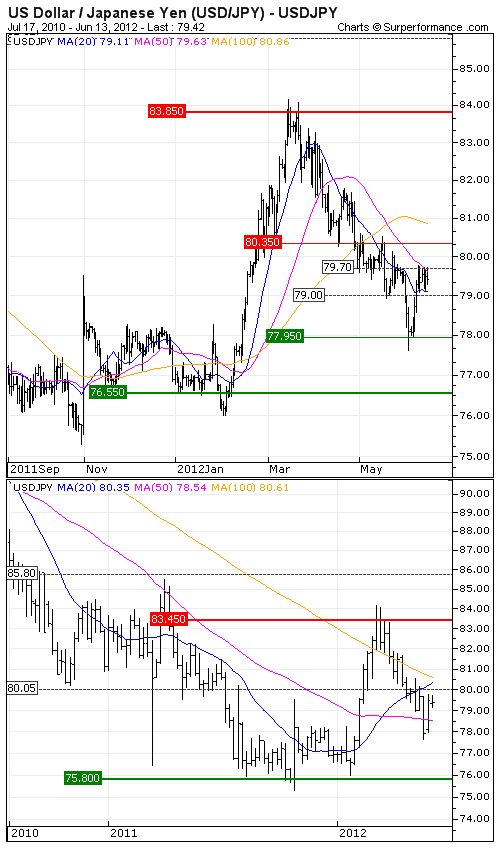US Dollar / Japanese Yen (USD/JPY) : Hesitation
By Mathieu Burbau
With only a few days to go until the monetary policy meeting of the Fed, Ben Bernanke does not close completely the door to new measures to support the economy. He did not give any details about such prospects in his last statements. On the contrary, China has encouraged risk appetite by lowering its rate of 0.25% for loans and deposits in one year (it was the first decline since 2008), in order to face the economic slowdown, highlighted by recent macroeconomic indicators.
In Europe, the announcement of an aid plan of 100 billion euros for Spanish banks slightly calms down tensions, even if the markets doubt of the effectiveness of this initiative because Spain is facing a structural crisis.
The Yen was enhanced by the Japanese growth rate in the first quarter, which was revised to 4.7% year-over-year against 4.1% for the previous estimate. While traders may be more tempted by trade-off in favor of the Japanese currency, the hypothesis of an intervention by the central bank to limit its increase helps the US dollar. Besides, David Lipton, IMF Deputy Managing Director, relayed by the Wall Street Journal, confirms fears: “If market forces lead to disruptive flows, short-term smoothing is something that we would understand”.
Graphically, the parity is locked in a trading range between JPY 79 and JPY 79.7 where it is complex to take a position. The next meetings of central banks and the development of the situation in Europe should bring new elements that may cause a comeback of volatility.










